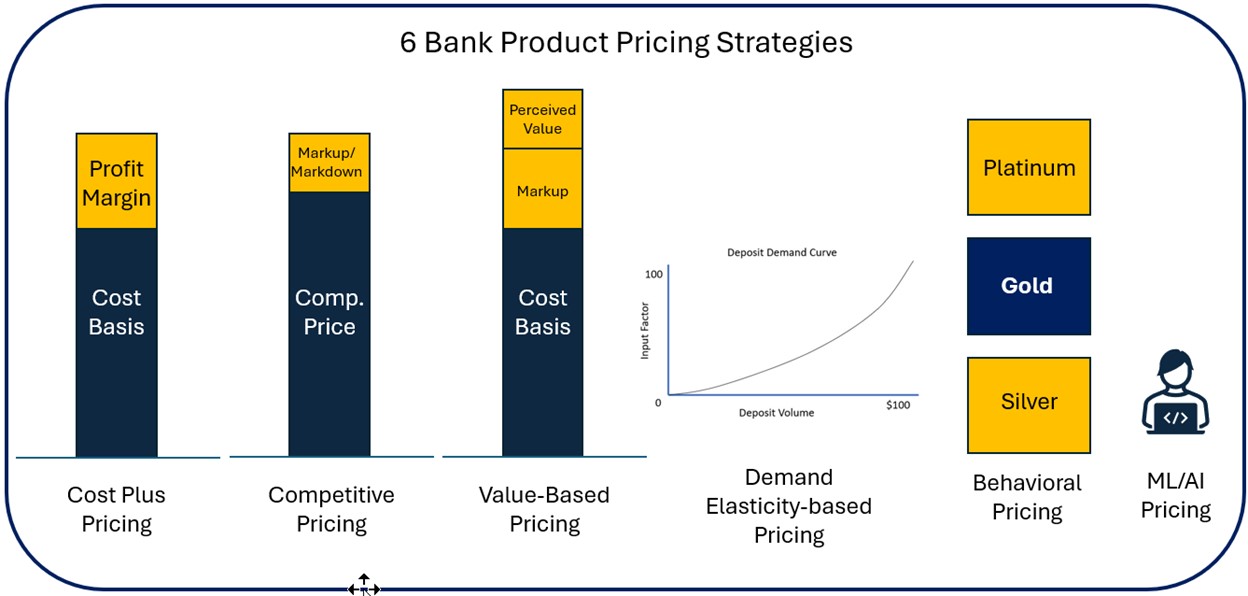Just how to Adjust Your Pricing Strategy for Different Market Segments
Just how to Adjust Your Pricing Strategy for Different Market Segments
Blog Article
Understanding Prices Strategies: An Overview to Boosting Competitiveness
In a significantly competitive landscape, mastering pricing techniques is vital for companies aiming to enhance their market position. Recognizing rival prices and the mental aspects that influence customer habits can create a nuanced approach to rates that resonates with target audiences.
Significance of Rates Methods
In the affordable landscape of company, the relevance of pricing strategies can not be overemphasized. Pricing offers as an important lever for organizations, influencing both market positioning and customer understanding. A well-defined prices method can improve profitability, drive sales, and develop an one-upmanship.

Understanding client actions is crucial in crafting prices strategies. Insights into price level of sensitivity, perceived worth, and affordable offerings enable businesses to adjust their rates models as necessary. Furthermore, regular evaluation of pricing performance is necessary to react to market characteristics and customer patterns.
Ultimately, a robust rates strategy is indispensable not only for earnings generation but additionally for lasting business feasibility. It forms brand identity, influences consumer loyalty, and plays a critical role in the general marketing method. Because of this, companies need to spend time and resources in establishing and fine-tuning their rates approaches to thrive in an ever-evolving marketplace.
Kinds of Rates Models
Just how work identify the most effective method to price their solutions or items? The response lies in understanding numerous pricing models, each fit to different market conditions and company goals.
One widespread model is cost-plus pricing, where a fixed percentage is contributed to the total cost of production. This method guarantees that all expenses are covered while producing a profit. Conversely, value-based pricing concentrates on the regarded worth of the item to the client, enabling companies to charge a premium based on consumer need and satisfaction.
An additional approach is vibrant pricing, generally utilized in sectors such as traveling and friendliness. This design readjusts rates in real-time based upon market demand, competitor prices, and various other outside factors. Infiltration rates is additionally considerable, where companies originally established reduced prices to get in a competitive market and gain market share, later increasing rates when a client base is developed.
Last but not least, skimming prices involves establishing high initial costs for new or cutting-edge items, taking advantage of very early adopters before reducing costs in time. Understanding these models enables organizations to tactically place themselves in the marketplace, aligning their prices strategies with their overarching objectives.

Analyzing Rival Pricing
Recognizing rival prices is an important element of creating a reliable rates method. Organizations needs to conduct complete analyses More hints of their competitors' pricing structures to recognize market positioning, analyze possible dangers, and discover possibilities for distinction. This requires gathering data on rivals' costs, promotional approaches, and any type of discount rates or rewards they offer.
Evaluate their pricing models, consisting of any tiered prices systems, membership charges, or mass discounts - Pricing Strategy. Recognizing the rationale behind these pricing techniques can give insights into consumer behavior and choices.
Think about the implications of competitor pricing on your value proposal. If competitors use comparable items at reduced costs, you might need to emphasize distinct selling points or boost consumer solution to justify your rates.
Eventually, assessing rival prices not only educates rates choices yet likewise assists businesses stay affordable in a constantly evolving market landscape.
Psychological Rates Strategies
Mental prices strategies leverage customer anonymous psychology to influence purchasing choices and boost the perceived value of items. One common technique is charm rates, where prices are set simply listed below a round number, such as $9.99 rather of $10.00.
An additional effective technique is stature rates, where greater rates are linked with better. This method attract consumers' desire for status and exclusivity, positioning items as exceptional offerings. In addition, bundling products with each other at an affordable rate can create a feeling of worth, prompting clients to acquire more than they at first meant.
Deficiency rates, which emphasizes restricted schedule or time-sensitive deals, can also activate necessity, pushing customers to act swiftly. By understanding and applying these psychological pricing techniques, businesses can effectively shape customer understandings, drive sales, and ultimately improve competition in the market.
Implementing and Adjusting Techniques

Once data is gathered, services should evaluate their prices designs versus existing market problems. This may involve adopting dynamic prices approaches that permit real-time changes based on supply and demand changes. Services need to additionally consider segmenting their market to customize rates for various consumer teams, boosting regarded value and driving sales.
Routinely evaluating pricing techniques is vital. This can be accomplished with A/B screening or client comments, which supplies insights into the performance of existing rates. In addition, organizations need to stay adaptable to adapt to unexpected changes, such as financial declines or arising competitors.
Verdict
In conclusion, effective pricing methods act as a critical component for companies aiming to boost competition in a varying market. By leveraging various rates versions, examining competitor rates, and utilizing mental techniques, business can better place themselves and communicate worth to consumers. Furthermore, on a regular basis readjusting these methods in response to market characteristics and consumer actions is crucial for guaranteeing lasting sustainability and earnings, ultimately promoting and driving sales consumer loyalty.
In a significantly competitive landscape, grasping rates techniques is crucial for services aiming to improve their market placement. Understanding competitor pricing and the emotional aspects that impact customer behavior can create a nuanced technique to rates that resonates with target audiences.Recognizing rival pricing is an important facet of creating an efficient rates technique. Examine their rates versions, including any tiered prices systems, membership charges, or mass price cuts. By leveraging numerous rates designs, assessing rival rates, and using psychological methods, companies can better position themselves and communicate value to consumers.
Report this page